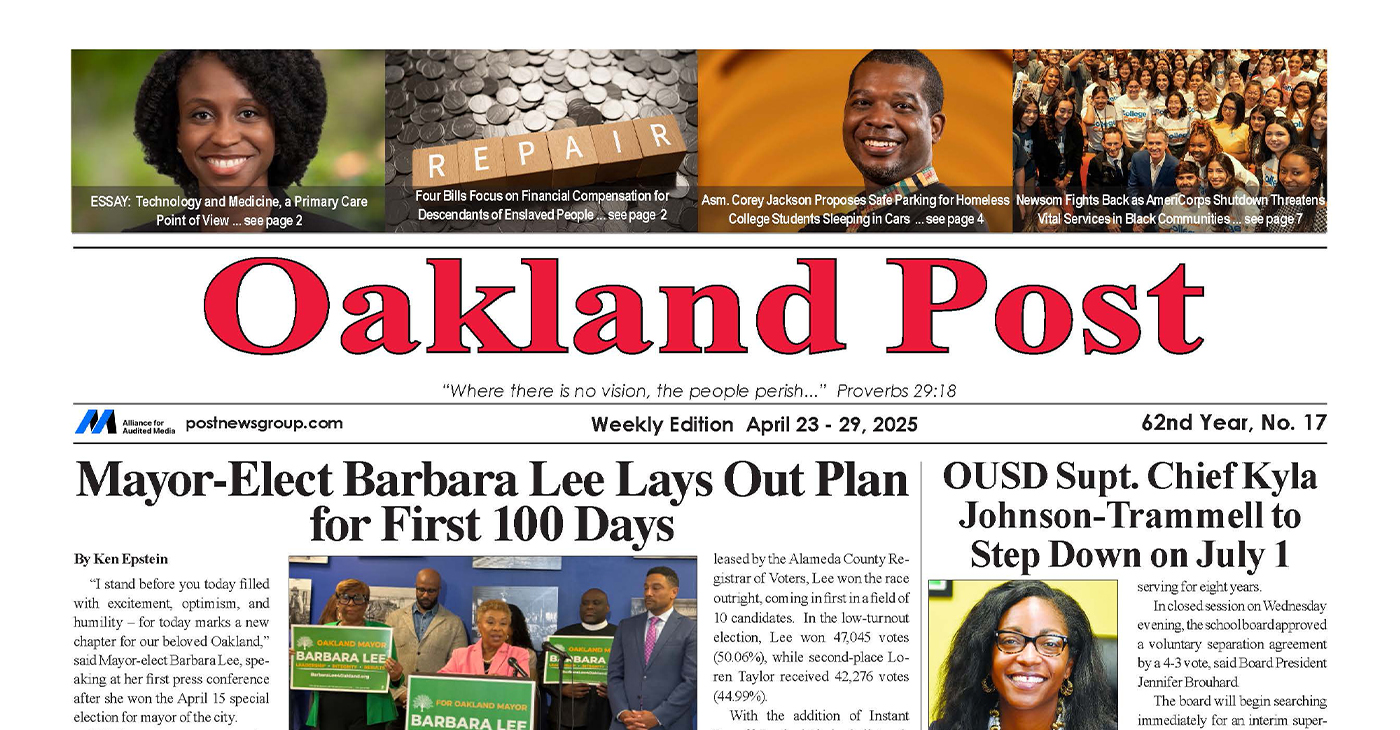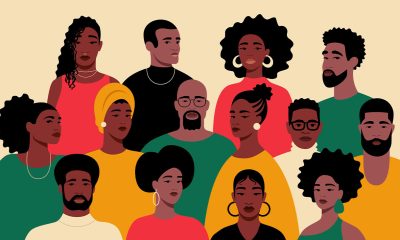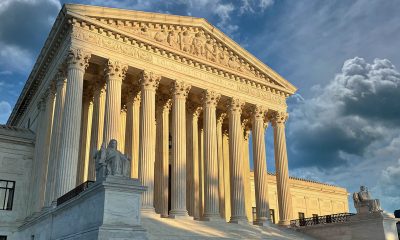National
Counting the Victims of Police Violence

In this Feb. 11, 2015 file photo, Attorney General Eric Holder speaks to law enforcement officers and guests in the Old Executive Office Building on the White House Complex in Washington. (AP Photo/Pablo Martinez Monsivais, File)
by Jazelle Hunt
NNPA Washington Correspondent
WASHINGTON (NNPA) — As Eric Holder ended his tenure as U.S. Attorney General, he said, “The troubling reality is that we lack the ability right now to comprehensively track the number of incidents of either uses of force directed at police officers, or uses of force by police,” he said, at a Martin Luther King Jr. Day event. “This strikes many – including me – as unacceptable.”
As it stands, both the Federal Bureau of Investigation and the Department of Justice compile information on police killings, as reported by police departments themselves. But there are challenges with the reliability with this data. By law, collecting and providing this information to the government is mandatory only for police agencies that receive certain federal funds; police killings found to be unjustified are not included in the FBI’s measures; and reporting guidelines can vary from place to place, to name a few issues.
Over the past few years, citizens have attempted to step in where official entities would not, creating well-regarded crowdsourced online databases such as KilledbyPolice.net, FatalEncounters.org and the U.S. Police Shootings Database (launched by Web sports blog, Deadspin).
MappingPoliceViolence.org is the newest addition to this effort. Mapping Police Violence builds on this tally by merging and crosschecking those first two databases. It compiles a month-by-month death toll for 2013 and 2014; and by combing through media reports and other public data, the contributors have confirmed the race of every victim in 2014.
Samuel Sinyangwe, a 24-year-old Ferguson protester and one of the project’s directors, said that this detail is missing for approximately 60 percent of the victims in the source databases.
Though the project highlights the disproportionate killing of Black people, it includes all reported deaths by date, location, race, age, gender, cause of death, and medical condition (e.g. under the influence, mentally disabled, etc.). Additionally, users can compare police departments around the country by population, murder rate, and how “likely to threaten Black life” they are.
“When you compare White folks and Black folks who were killed by police, there are big differences. White folks tended to be more likely to have a mental illness, to be armed, to be older… or to be drunk or under the influence. So they were more likely to have some condition that made it more challenging for police to deal with them,” Sinyangwe says.
“However for Black folks, they were less likely to do all of these things, and then they were still more likely to be killed. You can only do that analysis if you looked at all races and were able to compare and contrast.”
By Mapping Police Violence’s count, police killed at least 1,175 people in 2014. Of these victims, 302 were Black – a disproportionate rate of 26 percent – and 56 percent of these Black victims were unarmed. Most victims were shot, but other causes of death included Tasing, physical restraint, being hit by cars, and in one case in New York, falling from a window.
“What you can show quite plainly with this tool is that, in fact, places with the same amount of crime, the same demographics, have very different levels of police violence. So crime is not an excuse,” Sinyangwe said. “We’re hoping to really help [communities and organizers] make the case for why a given city or police department is really culpable for this and really needs to make a change.”
According to the data, Florida, Texas, and California had the highest number of Black victims last year (each responsible for between 20 and 35 deaths). Police departments responsible for the most deaths last year include Chicago Police Department (13 killed), followed by Los Angeles and New York (10 each), and Prince George’s County Police Department in Maryland (five deaths).
Sinyangwe points out that for the city of St. Louis, if the current trend continues, Black males 27 and younger will have a statistically greater chance of being killed by police than dying in a car accident.
The data also shows a marked drop in police killings after Michael Brown’s death and the start of the Ferguson protests. In August 2014, police killed 140 people around the country, 43 of them Black; the next month, those numbers fell to 80 and 19, respectively. They still have not returned to their August 2014 levels, for any demographic.
MappingPoliceViolence.org is run by Ferguson protesters and organizers, and is a project of the movement’s online hub, WetheProtesters.org. Volunteers around the country contribute to, sort, and verify the information.
“What I hope, and what DeRay [McKesson], [Johnetta Elzie], and I are building the capacity to do, is to use this tool to support groups on the ground…to be able to really make the case, using the best data available, for long-term institutional change,” Sinyangwe says.
“Particularly in the Midwest, and then a little bit in the South, there really are hotbeds for police violence. The question is, can we actually do something on a preventative end instead of waiting until a huge tragedy happens?”
###
Activism
Oakland Post: Week of April 23 – 29, 2025
The printed Weekly Edition of the Oakland Post: Week of April 23 – 29, 2025

To enlarge your view of this issue, use the slider, magnifying glass icon or full page icon in the lower right corner of the browser window.
#NNPA BlackPress
Chavis and Bryant Lead Charge as Target Boycott Grows
BLACKPRESSUSA NEWSWIRE — Surrounded by civil rights leaders, economists, educators, and activists, Bryant declared the Black community’s power to hold corporations accountable for broken promises.

By Stacy M. Brown
BlackPressUSA.com Senior National Correspondent
Calling for continued economic action and community solidarity, Dr. Jamal H. Bryant launched the second phase of the national boycott against retail giant Target this week at New Birth Missionary Baptist Church in Atlanta. Surrounded by civil rights leaders, economists, educators, and activists, Bryant declared the Black community’s power to hold corporations accountable for broken promises. “They said they were going to invest in Black communities. They said it — not us,” Bryant told the packed sanctuary. “Now they want to break those promises quietly. That ends tonight.” The town hall marked the conclusion of Bryant’s 40-day “Target fast,” initiated on March 3 after Target pulled back its Diversity, Equity, and Inclusion (DEI) commitments. Among those was a public pledge to spend $2 billion with Black-owned businesses by 2025—a pledge Bryant said was made voluntarily in the wake of George Floyd’s murder in 2020.“No company would dare do to the Jewish or Asian communities what they’ve done to us,” Bryant said. “They think they can get away with it. But not this time.”
The evening featured voices from national movements, including civil rights icon and National Newspaper Publishers Association (NNPA) President & CEO Dr. Benjamin F. Chavis Jr., who reinforced the need for sustained consciousness and collective media engagement. The NNPA is the trade association of the 250 African American newspapers and media companies known as The Black Press of America. “On the front page of all of our papers this week will be the announcement that the boycott continues all over the United States,” said Chavis. “I would hope that everyone would subscribe to a Black newspaper, a Black-owned newspaper, subscribe to an economic development program — because the consciousness that we need has to be constantly fed.” Chavis warned against the bombardment of negativity and urged the community to stay engaged beyond single events. “You can come to an event and get that consciousness and then lose it tomorrow,” he said. “We’re bombarded with all of the disgust and hopelessness. But I believe that starting tonight, going forward, we should be more conscious about how we help one another.”
He added, “We can attain and gain a lot more ground even during this period if we turn to each other rather than turning on each other.” Other speakers included Tamika Mallory, Dr. David Johns, Dr. Rashad Richey, educator Dr. Karri Bryant, and U.S. Black Chambers President Ron Busby. Each speaker echoed Bryant’s demand that economic protests be paired with reinvestment in Black businesses and communities. “We are the moral consciousness of this country,” Bryant said. “When we move, the whole nation moves.” Sixteen-year-old William Moore Jr., the youngest attendee, captured the crowd with a challenge to reach younger generations through social media and direct engagement. “If we want to grow this movement, we have to push this narrative in a way that connects,” he said.
Dr. Johns stressed reclaiming cultural identity and resisting systems designed to keep communities uninformed and divided. “We don’t need validation from corporations. We need to teach our children who they are and support each other with love,” he said. Busby directed attendees to platforms like ByBlack.us, a digital directory of over 150,000 Black-owned businesses, encouraging them to shift their dollars from corporations like Target to Black enterprises. Bryant closed by urging the audience to register at targetfast.org, which will soon be renamed to reflect the expanding boycott movement. “They played on our sympathies in 2020. But now we know better,” Bryant said. “And now, we move.”
#NNPA BlackPress
The Department of Education is Collecting Delinquent Student Loan Debt
BLACKPRESSUSA NEWSWIRE — the Department of Education will withhold money from tax refunds and Social Security benefits, garnish federal employee wages, and withhold federal pensions from people who have defaulted on their student loan debt.

By April Ryan
Trump Targets Wages for Forgiven Student Debt
The Department of Education, which the Trump administration is working to abolish, will now serve as the collection agency for delinquent student loan debt for 5.3 million people who the administration says are delinquent and owe at least a year’s worth of student loan payments. “It is a liability to taxpayers,” says White House Press Secretary Karoline Leavitt at Tuesday’s White House Press briefing. She also emphasized the student loan federal government portfolio is “worth nearly $1.6 trillion.” The Trump administration says borrowers must repay their loans, and those in “default will face involuntary collections.” Next month, the Department of Education will withhold money from tax refunds and Social Security benefits, garnish federal employee wages, and withhold federal pensions from people who have defaulted on their student loan debt. Leavitt says “we can not “kick the can down the road” any longer.”
Much of this delinquent debt is said to have resulted from the grace period the Biden administration gave for student loan repayment. The grace period initially was set for 12 months but extended into three years, ending September 30, 2024. The Trump administration will begin collecting the delinquent payments starting May 5. Dr. Walter M. Kimbrough, president of Talladega College, told Black Press USA, “We can have that conversation about people paying their loans as long as we talk about the broader income inequality. Put everything on the table, put it on the table, and we can have a conversation.” Kimbrough asserts, “The big picture is that Black people have a fraction of wealth of white so you’re… already starting with a gap and then when you look at higher education, for example, no one talks about Black G.I.’s that didn’t get the G.I. Bill. A lot of people go to school and build wealth for their family…Black people have a fraction of wealth, so you already start with a wide gap.”
According to the Education Data Initiative, https://educationdata.org/average-time-to-repay-student-loans It takes the average borrower 20 years to pay their student loan debt. It also highlights how some professional graduates take over 45 years to repay student loans. A high-profile example of the timeline of student loan repayment is the former president and former First Lady Barack and Michelle Obama, who paid off their student loans by 2005 while in their 40s. On a related note, then-president Joe Biden spent much time haggling with progressives and Democratic leaders like Senators Elizabeth Warren and Chuck Schumer on Capitol Hill about whether and how student loan forgiveness would even happen.
-

 Activism3 weeks ago
Activism3 weeks agoOakland Post Endorses Barbara Lee
-

 Activism4 weeks ago
Activism4 weeks agoOakland Post: Week of March 28 – April 1, 2025
-

 Activism3 weeks ago
Activism3 weeks agoOakland Post: Week of April 2 – 8, 2025
-

 #NNPA BlackPress3 weeks ago
#NNPA BlackPress3 weeks agoTrump Profits, Black America Pays the Price
-

 Activism2 weeks ago
Activism2 weeks agoOakland Post: Week of April 9 – 15, 2025
-

 #NNPA BlackPress3 weeks ago
#NNPA BlackPress3 weeks agoHarriet Tubman Scrubbed; DEI Dismantled
-

 #NNPA BlackPress3 weeks ago
#NNPA BlackPress3 weeks agoLawmakers Greenlight Reparations Study for Descendants of Enslaved Marylanders
-

 #NNPA BlackPress3 weeks ago
#NNPA BlackPress3 weeks agoTrump Targets a Slavery Removal from the National Museum of African-American History and Culture

























































